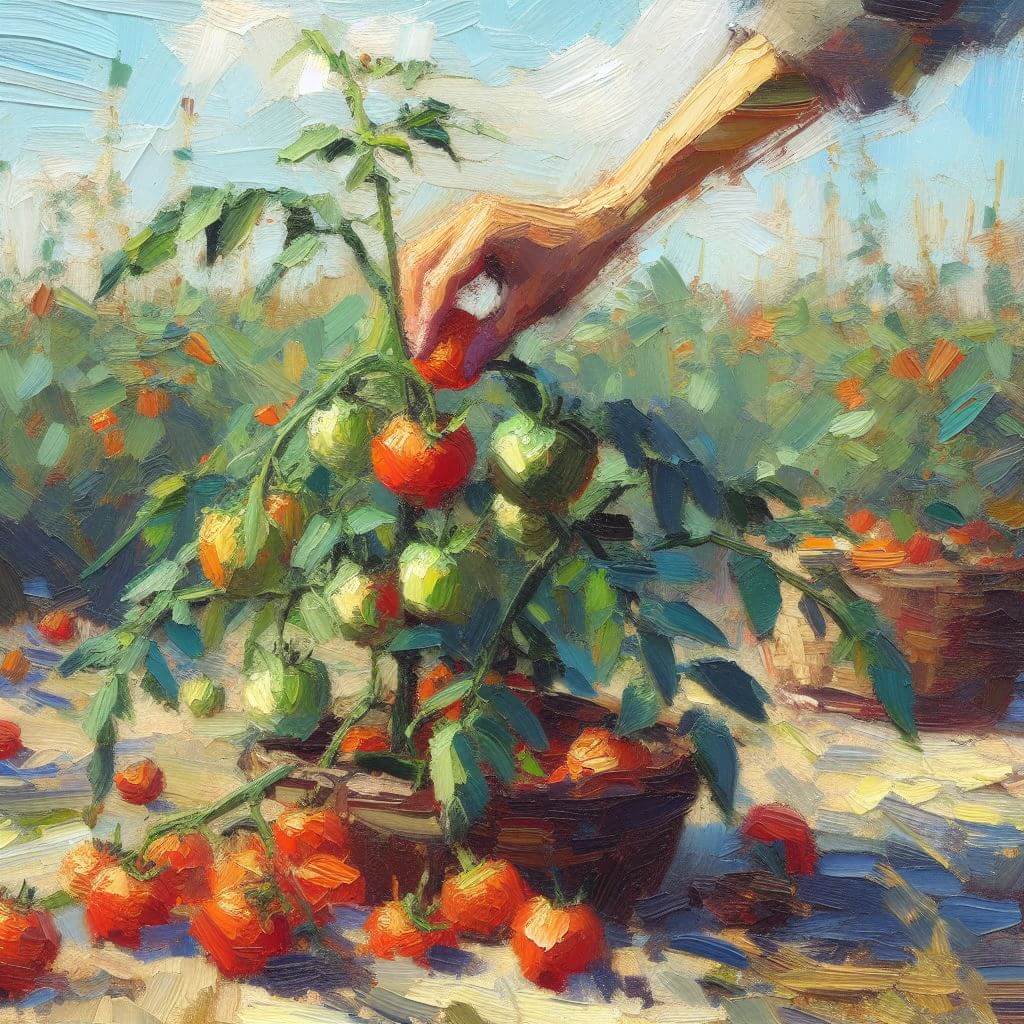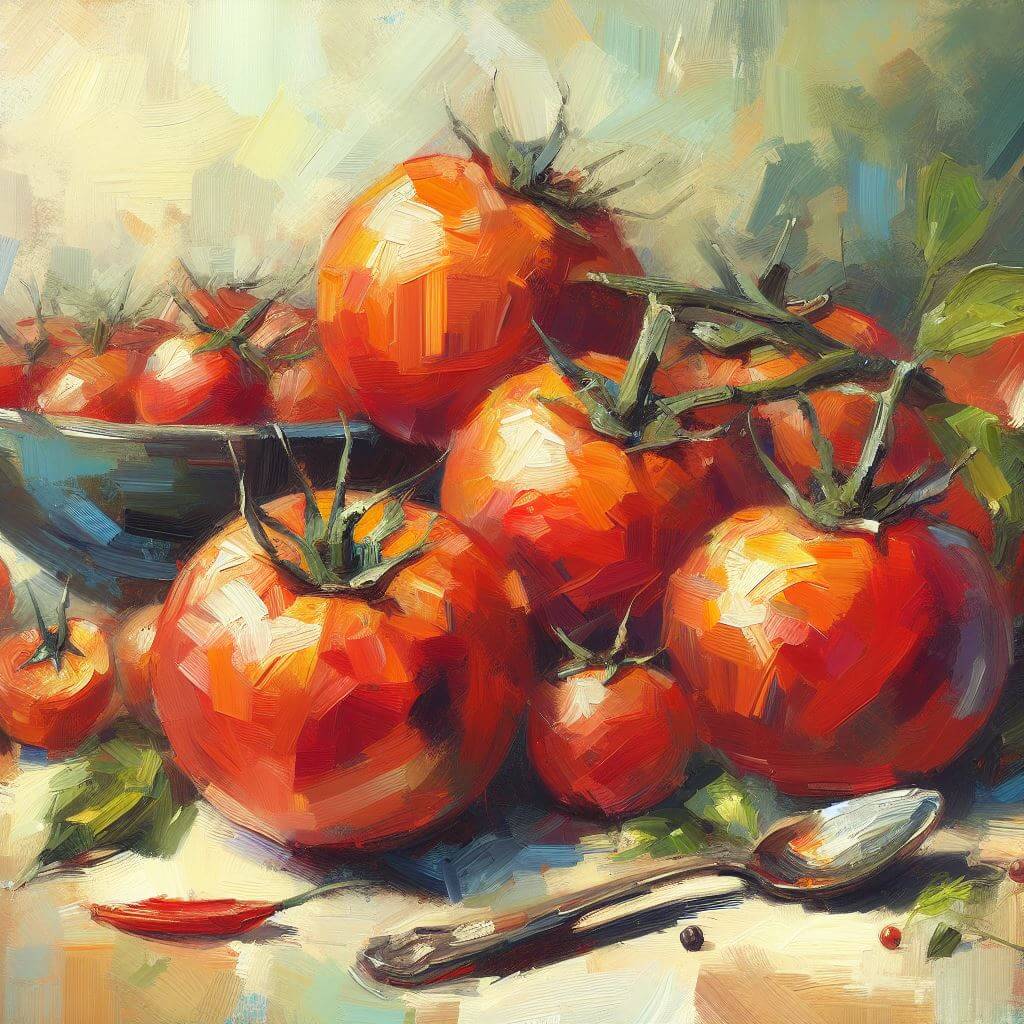
The act of nurturing a plant from a seed to a fruit-bearing wonder is an experience that can be both therapeutic and rewarding. Kansas, with its continental climate and fertile soil conditions, offers an excellent environment for the growth of tomatoes.
The Tomato Plant
Tomatoes are a universally loved vegetable (or fruit, if you want to get technical) due to their versatility in the kitchen and their robust flavor profile. But beyond their culinary value, tomatoes have a lot to offer. They are packed with essential nutrients like Vitamins A, C, and K, and are a good source of potassium. They also contain lycopene, a powerful antioxidant.
Growing your own tomatoes presents the opportunity to experiment with different varieties that may not be available in your local grocery store. From beefsteak to cherry, heirloom to hybrid, the world of tomatoes is rich and diverse.
Kansas: A Tomato’s Paradise
The state of Kansas provides a favorable environment for tomato cultivation. The region is characterized by a humid continental climate with hot summers and mild winters, which is ideal for growing tomatoes. The soil in Kansas is typically loamy, well-draining, and rich in organic matter, providing a nurturing ground for tomatoes to thrive.
The long, warm growing season of Kansas allows for both early and late harvests, giving you the chance to enjoy fresh, home-grown tomatoes for an extended period. The moderate rainfall ensures the soil remains adequately moist, while the sunny days contribute to the healthy growth of the plant.

Best Time to Plant Tomatoes in Kansas
Knowing when to plant tomatoes in Kansas can significantly impact the success of your harvest. The best time to plant tomatoes your is between mid-April and early May, after the last frost. Planting during this time ensures the tomato plants get a full growing season to mature and produce fruit before the first frost in the fall.
However, the exact timing can vary depending on the specific region within Kansas and the weather conditions in a given year. It’s crucial to monitor local weather forecasts and adjust your planting schedule accordingly. It’s also worth noting that planting too early or too late can expose your plants to unfavorable weather conditions and reduce their productivity.
When to Plant Tomatoes in Kansas: Region-Specific Recommendations
Northwest Kansas
Northwest Kansas includes areas like Goodland and Colby. It experiences cooler temperatures due to its higher elevations. The safe window to plant tomatoes in this region usually begins in early to mid-May, once the soil has warmed up adequately after the last frost.
Northeast Kansas
This region includes areas like Lawrence and Kansas City. The climate is slightly warmer than the northwest, allowing for a longer growing season. Here, tomatoes can typically be planted in late April to early May, post the last frost.
Southwest Kansas
Southwest Kansas includes areas like Dodge City and Garden City. The climate here is semi-arid with hot summers and mild winters. The best time to plant tomatoes in this region is from late April to early May, once the soil has warmed and the risk of frost has passed.
Southeast Kansas
This region includes areas like Pittsburg and Independence. The climate here is humid subtropical with hot, humid summers and mild winters. Tomatoes can be planted a bit earlier in this region, typically from mid-April to early May.
Central Kansas
Central Kansas includes areas like Salina and Hutchinson. The climate here is a mix of humid continental and humid subtropical climates, with hot summers and cold winters. The safe window to plant tomatoes usually begins around late April to early May, after the danger of frost has passed.

The Art of Planting Tomatoes
Planting tomatoes is a straightforward process that requires a little effort and a lot of love. Start by selecting a suitable variety of tomatoes for your garden. Consider factors like the size of the plant, the type of fruit, and the time to maturity.
Next, prepare the soil. Tomatoes prefer slightly acidic soil with a pH between 6.0 and 6.8. Amend your soil with compost or other organic matter to improve its fertility and drainage.
When you’re ready to plant, dig a hole deep enough to cover two-thirds of the plant, including the stem. This encourages the development of additional roots and results in a stronger, more robust plant. After planting, water the plant thoroughly and continue to water regularly, keeping the soil consistently moist but not waterlogged.
Tomato Varieties Suitable for Kansas
Choosing the right variety of tomatoes for your garden can significantly influence your gardening success. Kansas, with its long, warm growing season, can accommodate a wide range of tomato varieties. Here are some top picks that are well-suited for the Kansas climate:
Celebrity: This is a popular choice among Kansas gardeners. A hybrid variety, it is known for its disease resistance and consistent, heavy yields of medium-sized fruits. It’s an excellent choice for fresh eating, canning, and sauces.
Better Boy: Another reliable hybrid, the Better Boy produces large, juicy tomatoes that are perfect for slicing. It is a vigorous plant with a good disease-resistance profile.
Cherokee Purple: If you’re interested in trying an heirloom variety, consider Cherokee Purple. It produces large, uniquely colored fruits with a rich, sweet flavor. This variety is less disease-resistant than some hybrids, but the flavor makes it worth the extra care.
Roma: For gardeners interested in making sauces or pastes, Roma tomatoes are a great choice. These plum tomatoes have thick flesh with fewer seeds, making them ideal for cooking.
Sweet Million: This is a prolific cherry tomato variety that produces clusters of sweet, bite-sized fruits. It’s great for salads or for snacking straight off the vine.
Remember, choosing the right variety involves considering your personal taste, your gardening goals, and the specific conditions of your garden. With the wide variety of tomatoes available, you’re sure to find the perfect fit for your Kansas garden.

Caring for Your Tomatoes: A Labor of Love
Once your tomato plants are in the ground, the real work begins. Proper care and maintenance can significantly increase your yield and ensure that you have healthy, delicious tomatoes throughout the season.
Firstly, mulching is an essential step that should not be overlooked. Mulch helps to retain soil moisture, suppress weeds, and maintain a steady soil temperature. Organic mulches like straw or compost are great choices as they break down over time and improve soil structure.
Secondly, tomatoes are heavy feeders and appreciate a good feeding. A balanced tomato fertilizer can be applied a few weeks after planting and then every few weeks during the growing season to support strong plant growth and high yield.
Thirdly, staking or caging your tomato plants is highly recommended. This practice not only keeps the fruits off the ground, preventing disease and pest issues but also promotes better air circulation around the plant.
Lastly, regular monitoring of your plants is crucial. Look out for common tomato pests like aphids and hornworms, and diseases like blight or blossom end rot. Early detection and intervention are key to preventing minor problems from becoming major issues.
The Joy of Harvesting Your Tomatoes
The ultimate reward for all your hard work is the joy of harvesting your own tomatoes. Most tomato varieties are ready to harvest when they are fully colored and slightly soft to the touch. However, it’s important to note that some varieties, especially heirlooms, may have different indicators of ripeness.
Remember to harvest your tomatoes regularly, as allowing overripe tomatoes to remain on the vine can reduce overall plant productivity. Also, frequent harvesting encourages the plant to produce more fruit, extending your harvest season.
Wrapping Up the Tomato Journey
Understanding when to plant tomatoes, how to plant them, and how to care for them will ensure a successful growing season. The joy of harvesting your own tomatoes, knowing the care and effort that went into their growth, is a rewarding experience that is worth every moment spent in your garden.
So, why wait? Start planning your tomato garden today and embark on a wonderful journey of growth, learning, and delicious rewards. Happy gardening!



